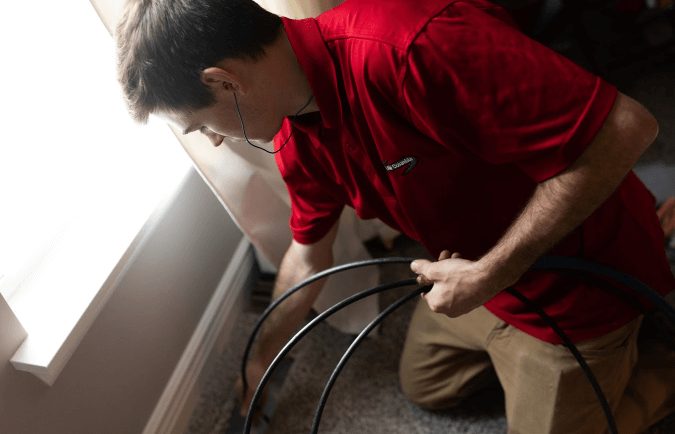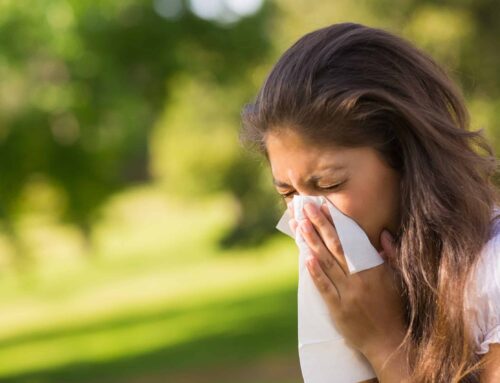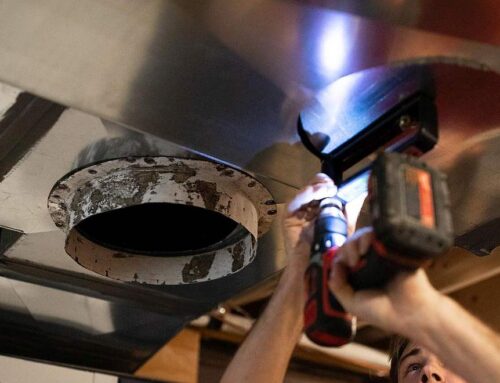According to the EPA (Environmental Protection Agency), we spend 90% of our time indoors where the air can be anywhere from 2 to 5 times more polluted than the air outdoors. Not all indoor allergens are evident or visible and symptoms may be subtle.
You might want to consider ways to improve the quality of the air you breathe inside your home and feel healthier in the process.
Allergens that have collected within the air ducts of your home HVAC system through the years can be recirculated 5-7 times daily each time the system kicks on according to the NADCA (National Air Duct Cleaners Association). Even pollen can linger in air ducts all year long!
Sources of Indoor Allergens
Consider your activities, the products you use daily or seasonally, ventilation, and the airborne elements that enter and permeate your indoor air. Cooking, cleaning, smoking; sprays (hairspray, perfumes, cleaning products); pet dander, dust/dust mites, mold, pollen, soot and smoke from a wood/coal stove or fireplace – all of these can settle within air ducts and be recirculated. Even cleaning and vacuuming can stir up dust!
Effects of Poor Indoor Air Quality
Indoor allergy symptoms may be subtle for some of us…a headache or stuffy nose when you wake up; perhaps a bit of a cough, occasional sneezing, dizziness, fatigue, or throat and eye irritation. However, for a person with asthma, respiratory issues, or other chronic conditions these indoor pollutants can be debilitating.
Ducts are a favorite hiding place for ordinary household allergens and breathing them in daily can affect your well-being. If you notice a musty order in your home and experience allergy symptoms, it may be time to have air ducts professionally cleaned.
How to Improve the Indoor Air You Breathe
• Vacuum your floors often with a slow and steady pace to prevent dust from flying up into the air – especially if you have pets and carpet. Select a vacuum with a HEPA filter which is more efficient at picking up microscopic dander that a regular vacuum cannot filter.
• Install laminate, hardwood, or linoleum flooring and use area rugs that are low-pile or washable.
• Remove shoes at the door to reduce the number of particles brought inside and spread throughout the house.
• Limit clutter and dust collectors; store items in air-tight plastic bins rather than in boxes.
• Choose dust-mite-proof covers for bedding and wash sheets, pillowcases, and blankets weekly. Also, hang curtains or roller-type shades that you can wash or dry clean.
• Change your air filter at least every 2-3 months (a clean duct system will require less frequent filter changes). A clogged filter no longer can trap particles which are then recirculated throughout your home.
• Choose a filter with a MERV (Minimum Efficiency Reporting Value) of 7 or higher. Buying a cheaper filter and changing it more often is not the answer. A cheap filter will only capture very large particles allowing the finer ones to go right through even when it’s brand new.
Contact Clean Air Columbia to Professionally Clean Your Air Ducts
As a certified member of the NADCA, Clean Air Columbia ensures higher standards and quality of work. This family owned and operated company focuses exclusively on the air duct cleaning industry using state of the art equipment designed specifically for residential and light commercial work.
Clean Air Columbia is committed to helping you breathe easier by ensuring that the air pumping through the vents into your home is well-filtered and clean!




